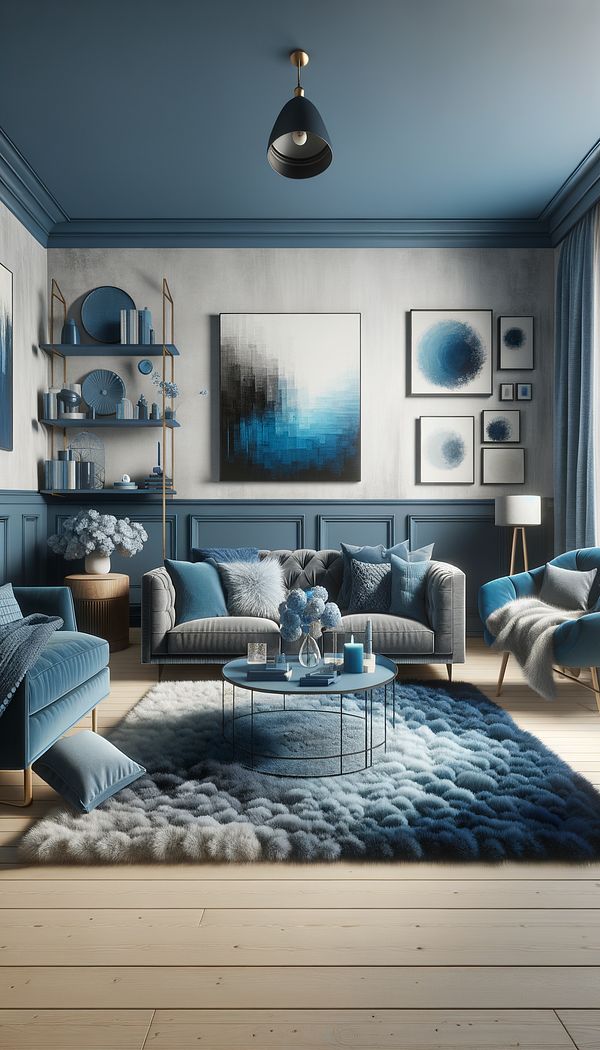What is Monochrome?
Monochrome refers to a design theme that uses different shades, tones, and textures of a single color.
Description
Monochrome, in the context of interior design, refers to the sophisticated and cohesive aesthetic achieved by utilizing various shades, tones, and textures of a single color within a space. This design approach focuses on creating depth and interest through the use of one color, allowing for a seamless visual experience that emphasizes cleanliness, simplicity, and elegance.
A monochrome palette can range from bold and striking to soft and understated, depending on the chosen hue and how it's implemented in the space. By carefully selecting and combining different elements such as paint, furniture, textiles, and decorative accessories all in the same color family, designers can craft spaces that feel both cohesive and dynamic. The reliance on a single color encourages creativity in mixing materials, patterns, and textures to add visual interest and tactile variation.
This design approach is versatile, fitting well with various design styles, from minimalist to eclectic. It offers a straightforward way to create a sophisticated and unified interior but requires careful planning to avoid a flat or monotonous look. Skillful use of lighting, both natural and artificial, also plays a crucial role in bringing a monochrome space to life, accentuating textures and highlighting subtle variations in tone.
Usage
Monochrome interiors can be found anywhere, from ultra-modern urban apartments to serene beachside homes. It's particularly popular in spaces where a streamlined, harmonious aesthetic is desired, such as art galleries, minimalist living rooms, or sophisticated hotel lobbies. This design principle is also applied in other design-related fields, such as fashion and branding, which further emphasizes its versatility and appeal.
FAQs
-
Can monochrome interiors include black and white?
Yes, monochrome interiors can include black and white, especially when using a neutral color like gray as the base. Black and white can serve as accents or complementary tones to add contrast and depth.
-
How can texture play a role in a monochrome design?
Textures are vital in monochrome designs to prevent the space from appearing flat. Incorporating various textures through materials like plush rugs, smooth stone, or woven textiles can add visual interest and tactile diversity.
-
Is monochrome design only suitable for contemporary spaces?
No, monochrome design is highly versatile and can complement various styles, from contemporary and minimalist to traditional and eclectic. Its adaptability lies in the choice of color and how it's applied throughout the space.
Practical Application
When employing a monochrome design, start with choosing a primary color that resonates with the intended feel of your space. Plan meticulously to include different shades and textures of your chosen color across all elements in the room, from walls to furnishings. Don't forget to incorporate sufficient lighting to enhance the visual depth and highlight the nuances of the monochrome palette.
-
Design Styles478 articles
-
Decorative Techniques322 articles
-
Decorating Principles & Elements330 articles
-
Color & Patterns154 articles
-
Textiles & Upholstery252 articles
-
PigmentPigment is a colored material that is used to add color to other materials.
-
GueridonA Gueridon is a small, often round, stand or table.
-
European StyleEuropean style refers to a diverse blend of design influences from various countries across Europe.
-
ElevationElevation is a flat representation of a facade or an interior wall, depicting it head-on.
-
LimingLiming is a decorative technique that lightens wood while also highlighting its grain.
